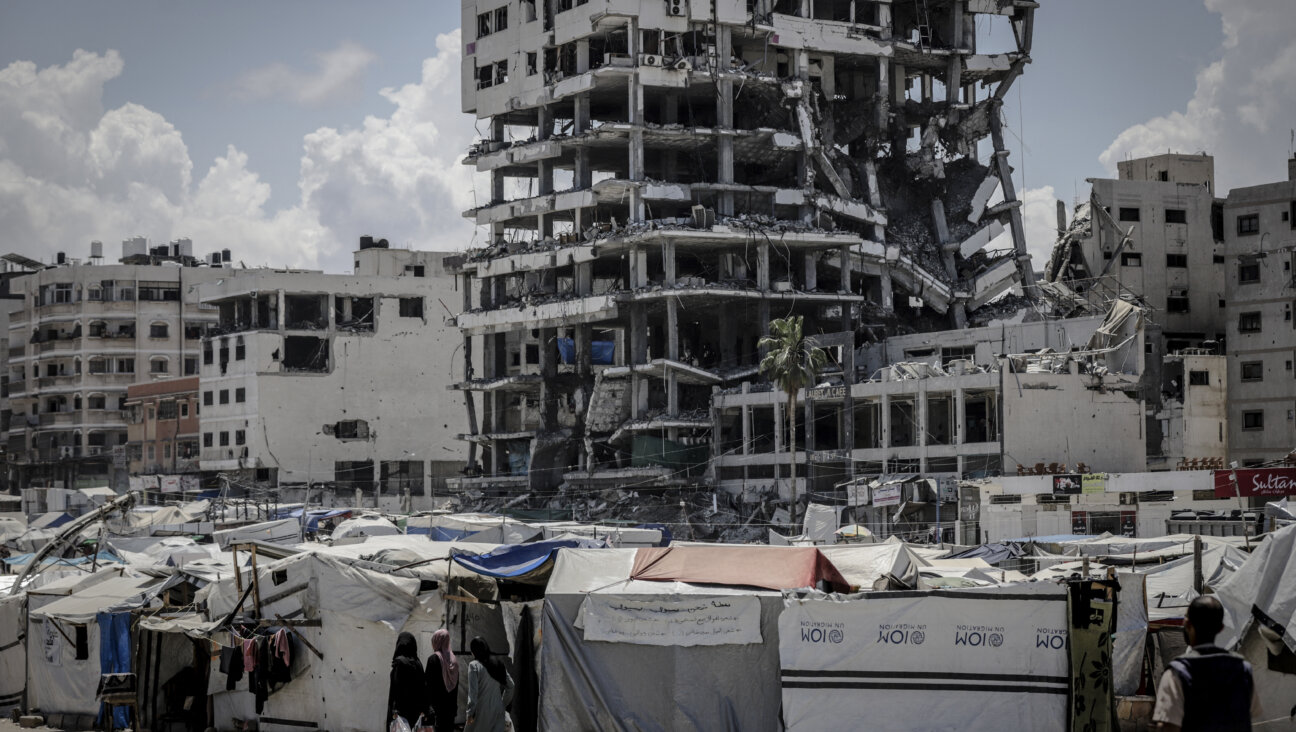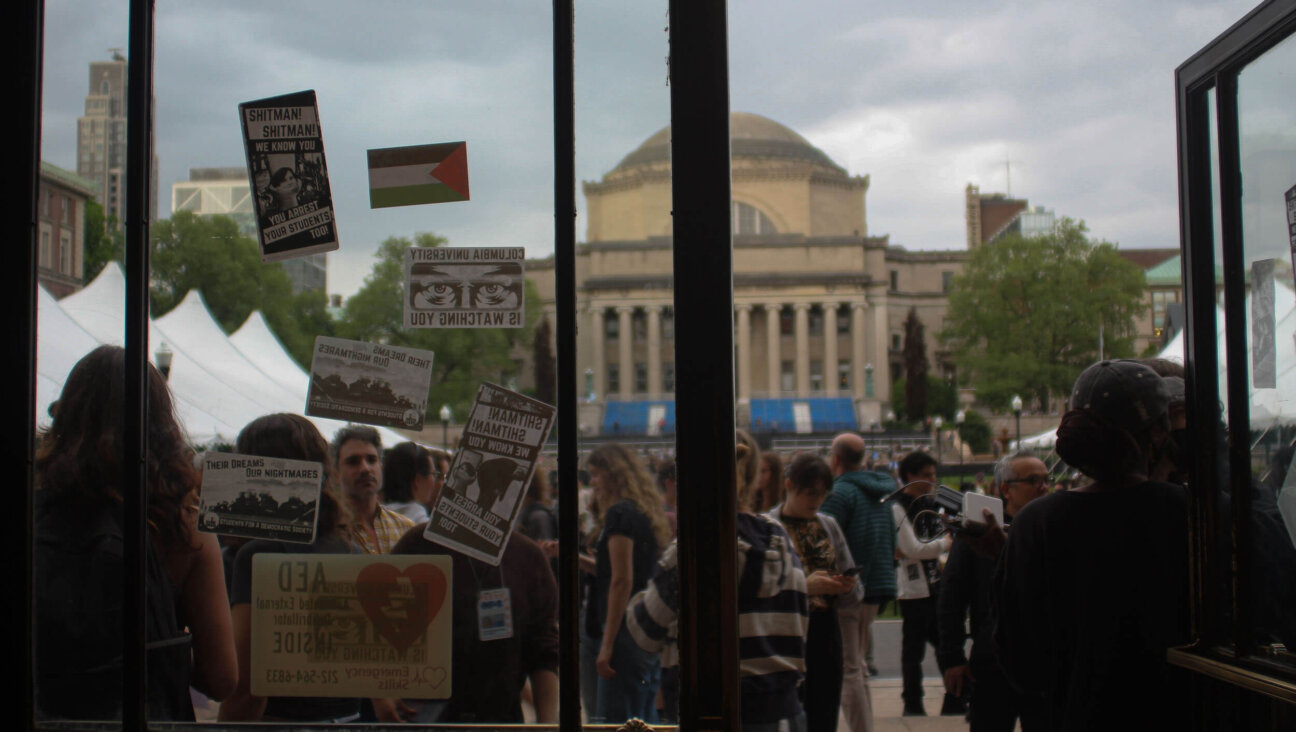Playing With Matches in Hebron
There are two ways to explain Prime Minister Benjamin Netanyahu’s announcement of plans to renovate two sacred shrines in the West Bank and add them to his new heritage trail of Israeli historical sites. One explanation is that he wants to buy some credit with settlers and the religious right in order to shore up his right flank, because he’s preparing to enter negotiations with the Palestinians that will entail serious concessions. The other is that he‘s not prepared to make serious concessions at all right now, and he figures he can buy some time by stirring up a bit of a rumpus.
Either way, he’s playing a dangerous game. The region is a tinderbox — a cliché, but truer now than ever. Constantly escalating threats have been flying back and forth for months between Israel and Hamas, Hezbollah and Syria, each side insisting it doesn’t want war but threatening hellfire if the other side shoots first. Lurking in the background is their patron, Iran. It’s an odd moment for Israel’s prime minister to be playing with matches.
On its face, the heritage plan is a fire hazard. One of the sites slated for a facelift is the Tomb of the Patriarchs in Hebron, a revered shrine in Islam as well as in Judaism. (The other is Rachel’s Tomb near Bethlehem.) The Tomb of the Patriarchs is currently shared by the two faiths in a precarious, heavily guarded condominium arrangement that periodically erupts. A remodeling job could be deadly. Nobody knows better than Netanyahu how quickly blood starts to flow when you create an Israeli tourist attraction near a Muslim holy site. He’s been through it before — notably when he opened a new exit to an ancient tunnel along the base of the Temple Mount for public use in 1996, sparking riots and igniting a shooting war with Palestinian Authority police that left 70 dead.
The stakes today make the 1996 tunnel riots look like child’s play. Just about everyone in Israel, from cabdrivers to intelligence officers, is predicting war by year’s end. It’s a war that none of the local parties wants, according to Israeli and Western intelligence agencies, but it will be inevitable if the players don’t find a way to back off.
The next war, if it comes, will be unlike anything Israel has known in the six decades since its independence war, Israeli security experts tell me. Hezbollah is capable of hitting metropolitan Tel Aviv, the densely populated heart of the Jewish state, with hundreds, perhaps thousands of sophisticated, long-range rockets. In the view of one well-connected Israeli journalist I spoke to, the country would be changed beyond recognition, not just physically but psychologically and politically.
The big question mark is what might trigger the war. Hezbollah has largely rebuilt the arsenal it lost in the Second Lebanon War of 2006. Experts believe, though, that it isn’t ready yet for a new round and isn’t eager to start one. Moreover, its new role as a partner in Beirut’s governing coalition raises the stakes for Lebanon, which dreads the pulverizing it will face in the next war.
But Hezbollah is not its own master. It opens fire when Iran tells it to. And Iran’s goal right now, Israel and the Western allies agree, is to preserve its freedom of action and slow the march toward sanctions. Hezbollah plays a key role in the Iranian game-plan, mainly as a sword dangling over Israel’s head. If and when Tehran decides that international pressure over its nuclear program has become intolerable, Hezbollah can be unleashed and Israel will pay the price.
The same goes for Hamas, although to a lesser degree. Hamas’s weaponry is trivial compared to Hezbollah’s. The sophisticated new systems smuggled into Gaza over the past year can probably inflict real damage on Beersheba and perhaps Ashkelon, a serious enough threat. With its likely ability to hit Tel Aviv, Hezbollah is the real threat. But Hamas is the likelier fuse for a regional conflagration.
Israel’s near-term goal, therefore, should be easing conditions in the territories and avoiding unnecessary confrontations. The idea is twofold: First, to deny Hamas an excuse for war. Second, to reduce Israeli-Palestinian tensions and strengthen the Palestinian Authority — which would, in turn, make it easier for neighboring states to line up with Israel and isolate Iran.
Perhaps Netanyahu’s addition of the two West Bank sites to the heritage trail is a shortsighted gambit to distract the right. Or maybe it’s just another chance to wave the flag and stick it to the Palestinians. Either way, this sort of provocative maneuver is the last thing Israel needs.
Contact J.J. Goldberg at [email protected] and follow his blog at blogs.forward.com/jj-goldberg
The Forward is free to read, but it isn’t free to produce

I hope you appreciated this article. Before you go, I’d like to ask you to please support the Forward.
Now more than ever, American Jews need independent news they can trust, with reporting driven by truth, not ideology. We serve you, not any ideological agenda.
At a time when other newsrooms are closing or cutting back, the Forward has removed its paywall and invested additional resources to report on the ground from Israel and around the U.S. on the impact of the war, rising antisemitism and polarized discourse.
This is a great time to support independent Jewish journalism you rely on. Make a gift today!
— Rachel Fishman Feddersen, Publisher and CEO
Support our mission to tell the Jewish story fully and fairly.
Most Popular
- 1

Fast Forward Ye debuts ‘Heil Hitler’ music video that includes a sample of a Hitler speech
- 2

Opinion It looks like Israel totally underestimated Trump
- 3

Culture Cardinals are Catholic, not Jewish — so why do they all wear yarmulkes?
- 4

Fast Forward Student suspended for ‘F— the Jews’ video defends himself on antisemitic podcast
In Case You Missed It
-

Culture How one Jewish woman fought the Nazis — and helped found a new Italian republic
-

Opinion It looks like Israel totally underestimated Trump
-

Fast Forward Betar ‘almost exclusively triggered’ former student’s detention, judge says
-

Fast Forward ‘Honey, he’s had enough of you’: Trump’s Middle East moves increasingly appear to sideline Israel
-
Shop the Forward Store
100% of profits support our journalism
Republish This Story
Please read before republishing
We’re happy to make this story available to republish for free, unless it originated with JTA, Haaretz or another publication (as indicated on the article) and as long as you follow our guidelines.
You must comply with the following:
- Credit the Forward
- Retain our pixel
- Preserve our canonical link in Google search
- Add a noindex tag in Google search
See our full guidelines for more information, and this guide for detail about canonical URLs.
To republish, copy the HTML by clicking on the yellow button to the right; it includes our tracking pixel, all paragraph styles and hyperlinks, the author byline and credit to the Forward. It does not include images; to avoid copyright violations, you must add them manually, following our guidelines. Please email us at [email protected], subject line “republish,” with any questions or to let us know what stories you’re picking up.















